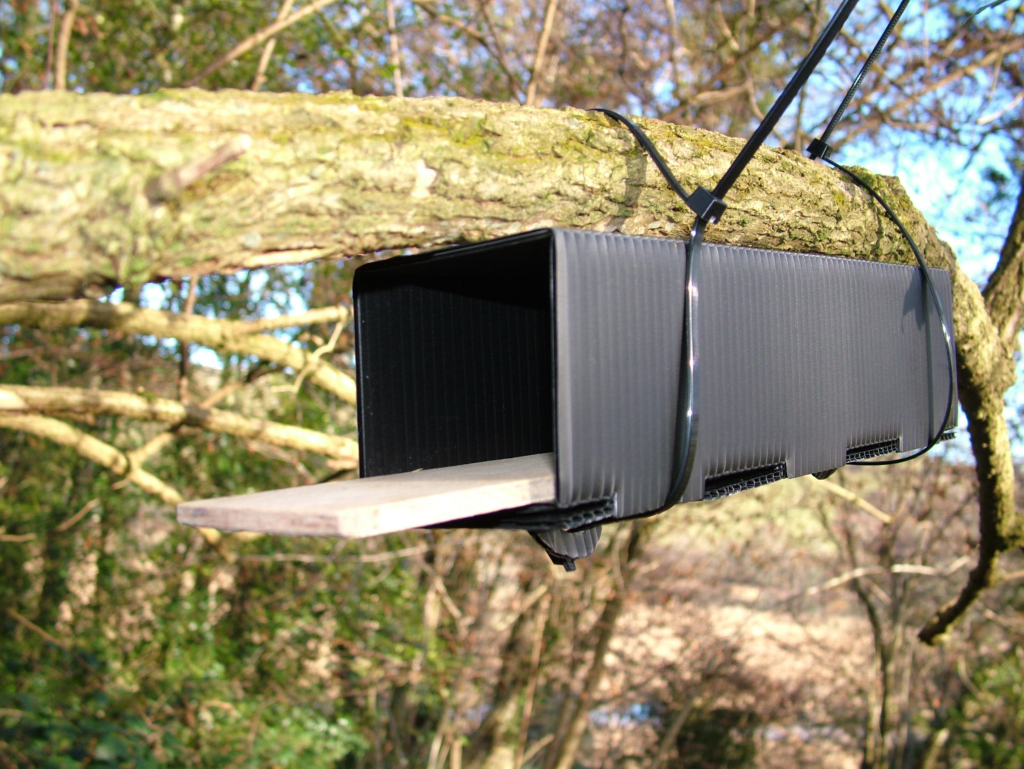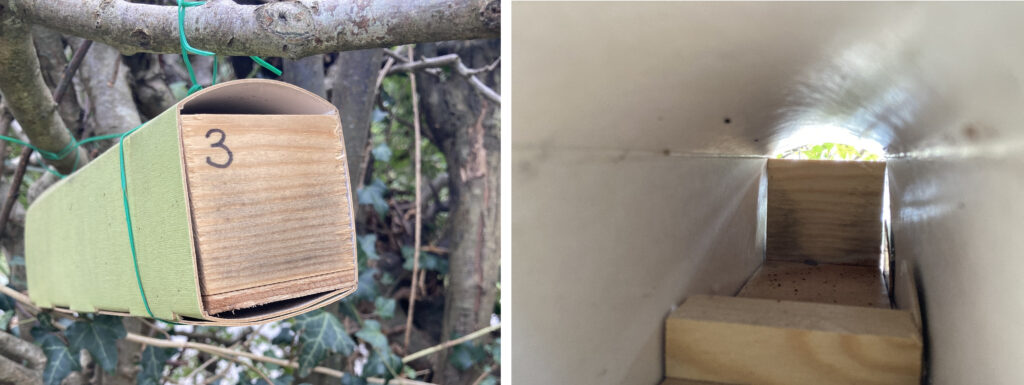
The dormouse nest tube problem
At NHBS, the environmental impact of our products, both in terms of their manufacture and eventual disposal, is at the heart of our manufacturing business. Of equal importance is the practicality of their design and how fit for purpose they are for their users. With this in mind, we are always looking for ways to both design new and improve existing products based on current research and feedback from our customers.
Last year, we began to apply this thinking to our dormouse nest tubes. We had some concerns about any tubes that might be left behind at survey sites, thus polluting woodlands with unwanted plastic. We were also thinking ahead to the disposal of tubes that, following years of use outside, are no longer fit for purpose and which must then be thrown away.
With this in mind, our manufacturing team began developing an alternative, biodegradable version of our dormouse nest tubes.

A new environmentally friendly design
Dormouse tubes consist of a plastic sleeve into which slides a wooden tray that also serves to seal one end when in place. These tubes create a dark and narrow enclosure that is ideal for dormice to build their nests. By strapping a number of these tubes to horizontal branches in a suitable woodland, they can be used to determine the presence of dormice by periodically inspecting them for evidence of nests and/or inhabitants. As this is a standard survey technique within the UK, our new, environmentally friendly dormouse tubes would need to be able to be used in the same way.
Our new design would use the same wooden inserts in combination with a modified sleeve constructed from Earthboard. Earthboard is a plastic-free biodegradable material, often used to make tree guards. It is coated with a non-toxic water repellent coating which makes it suitable for use outside, lasting for up to two years before decomposing naturally. Critically, being plastic-free, Earthboard does not shed microplastics into the environment.
Its relatively slow breakdown means that Earthboard would be ideal for our purposes. It would last for more than a single survey season in the field and, if accidentally left outside, would decompose naturally over time. Any tubes that fell to the ground would take around 16-20 weeks to break down and, at the end of the season, they could be recycled in the same way as cardboard (although they are not suitable for home composting due to their relatively slow rate of natural decomposition).
In 2023, our manufacturing team produced a number of Earthboard sleeves that were compatible with our existing wooden inserts. These were sent to several of our customers and associates who kindly agreed to undertake some field tests during the 2023 survey season.
Initial field tests
At the end of the dormouse survey season, our field testers helpfully provided us with lots of feedback. Unfortunately, not all of it was good. While most were broadly positive about the intention of the product, there were some significant problems.
The most serious of these was that, after a short amount of time in the field, deterioration by the elements meant that the tube was no longer a good fit for the wooden insert. The top of the plastic tube became curved, thus creating a space into which light, draughts and moisture could enter, making the tubes much less desirable to dormice as a nesting location. Similarly, the relatively pale colour of the Earthboard meant that the interior was not as dark as that of the original plastic tubes, again making it less attractive to dormice.

A further concern related to how dormouse tubes are generally used. It is typical for ecologists to collect all of their tubes at the end of the survey season and re-use them in subsequent years. It is unusual for tubes to be left in the field, unless they cannot be located for any reason. Equally, there is a cost factor involved. Although Earthboard is suitable for recycling with cardboard via kerbside waste collections, which makes their disposal preferable to traditional plastic tubes, the need to purchase new sleeves at the beginning of each season isn’t an attractive option for most ecologists.
So, what next?
Due to the lack of positive feedback, along with concerns about the practicalities and economics of these biodegradable dormouse tubes, we have decided not to continue with their development. Despite the fact that this particular project didn’t ultimately lead anywhere, however, we are incredibly proud of our continuing endeavours to improve our products and make sure they are as user friendly and environmentally responsible as possible.
We would like to thank everyone that was involved in field testing this product and taking the time to provide us with such valuable feedback. It is only through constant communication and cooperation with our valued customers that we can continue to design, manufacture and provide such high-quality products and support conservationists worldwide.
